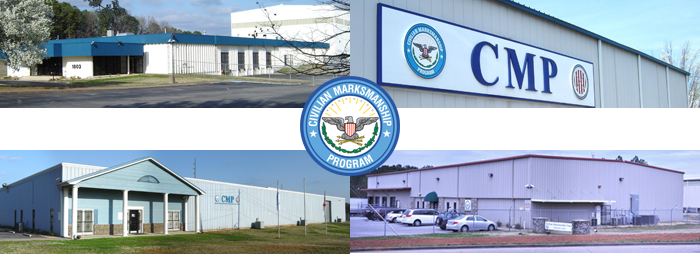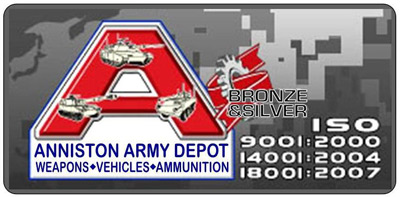ANNISTON, ALABAMA - Because the Civilian Marksmanship Program is a 501(c)(3) non-profit organization, it receives no taxpayer dollars or government funding to sustain its operations.
CMP relies on a variety of financial resources to carry out its mission but the funding engine that drives CMP programs is the sale of government surplus rifles provided by the US Army.
Other funding sources include private donations, participation fees and the sale of accessories and ammunition. By law, all proceeds from these funding sources are used to sustain CMP programs. Any surplus is reinvested in the CMP's permanent endowment fund which will be used to continue its mission after the supply of surplus government rifles is exhausted.
CMP's working relationship with the armed services is an important one. A considerable portion of the CMP budget is expended on programs that directly benefit military marksmanship training and competition. That support is provided at no cost to the government.
Some of the services include ceremonial rifle repair for veterans' organizations, providing expert civilian instructors to support US Army marksmanship instructor training, scholarships for JROTC cadets and contributions to upgrade the infrastructure at Camp Perry.
It's the association with the US Army that provided for a smooth transition from the former government-operated DCM program to the civilian program in 1996.
CMP South began operating from the Anniston Army Depot in a moth-balled 10,000 square-foot brick warehouse equipped with nothing more than a picnic table.
After the transition there was an immediate demand for someone to pick up existing orders for rifles and sustain demand for future sales. Rifle inventory needed to be tracked; incoming rifles needed to be serviced and made ready for shipping and a marketing program needed to be established.
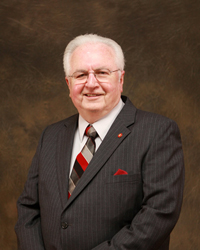
|
|
Mr. Charles Maddox, Chairman, CMP Board of Directors
|
CMP Board President Charles Maddox began assembling a staff and hired Nina Michaels as its first employee, followed a week or more later by her husband Orest - a retired federal employee whose expertise in small arms management at the Anniston Depot provided immeasurable value. With Nina's organizational skills and Orest's knowledge of the depot operation, the CMP South sales program was off the ground as a civilian organization.
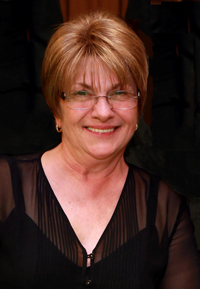
|
|
Mrs. Nina Michaels, General Manager, CMP South |
Lynne Williams was the third employee hired by CMP in its early days and is now charged with the enormous task of rifle serial number tracking. Every attribute of a rifle's identification is dependent on the rifle's original serial number and CMP's corresponding information. In the early days she shared the workload with Nina and Orest in running parts, packaging, shipping and distribution out of the ANAD warehouse.
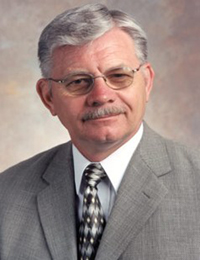
|
|
Mr. Orest Michaels,
Chief Operating Officer |
Today Orest fondly reflects on those difficult yet formative days of CMP South's sales operation.
"We had very little to work with, so we begged for and borrowed everything we needed to make things work," he said. "We built CMP South from the ground up," he said.
CMP’s quarters, Building #110 at ANAD had virtually no creature comforts from which to operate a business - no heat or air conditioning, no running water or bathroom facilities, no filing cabinets, desks or chairs - just a picnic table.
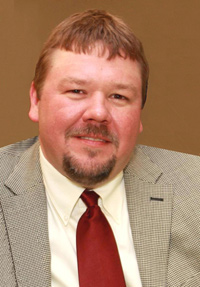
|
|
Mr. Mark Johnson, Assistant Chief Operating Officer
|
Mark Johnson, today’s assistant chief operating officer, oversees the day-to-day CMP physical plant operation. He joined CMP in 2000 as a part-time armorer, coming to the organization with a lifelong history of firearms knowledge as a shooter, collector, gunsmith and local gun store owner.
It's Johnson's job to see that the acquisition of rifles and all related materials that come into CMP South are made ready for sale and distributed to CMP customers through direct shipment or via CMP stores.
"Building #110 was a pre-World War II brick warehouse - it was an empty hull. As time went by they built a couple of offices," Johnson said. "Mrs. Michaels packed rifles on the picnic table and shipped them out.”
"She took the packed rifles to the post office and mailed them to CMP customers," Johnson said.
"He was basically digging through Sanford & Son's back lot," Johnson says referring to the 1970s television sitcom.
CMP South operated at ANAD until 2002 when it began expanding operations to accommodate the growing demand for rifles and accessories. CMP was able to locate relatively inexpensive facilities in an industrial park setting.
It acquired its first stand-alone building on Commerce Boulevard in Anniston, now called Anniston Maintenance (AM). The building was a formerly used by a lighting manufacturer and now serves as CMP South's primary rifle disassembly/reassembly (maintenance) and testing facility.
A year later CMP moved into its second building, known as Anniston Distribution (AD). The former tomato packing plant on Red Morris Drive, not far from AM, is home to the CMP South store and distribution center.
In 2004 CMP South added its third facility, a former York Casket Co. metal stamping plant designated Anniston York (AY), which now serves as CMP South's large-quantity receiving facility.
Most recently CMP acquired its Sentinel Drive facility known as Anniston Training (AT) which houses short-term warehousing, office facilities and the CMP South Marksmanship Center. The marksmanship center features an 80-firing point, computer-controlled airgun range used for training and airgun competitions. The facility formerly belonged to Sentinel Consumer Products where it made sterile bandages and cotton swabs.
"We are very proud of our growth in Anniston. Our facilities serve our needs well and enable us to properly handle a large volume of surplus so they may be reconditioned and made marketable," Orest said.
In our next installment we will discuss the process of acquisition, maintenance, grading, testing and repackaging of surplus rifles made available for sale through the CMP sales program.
NEXT ARTICLE
|
